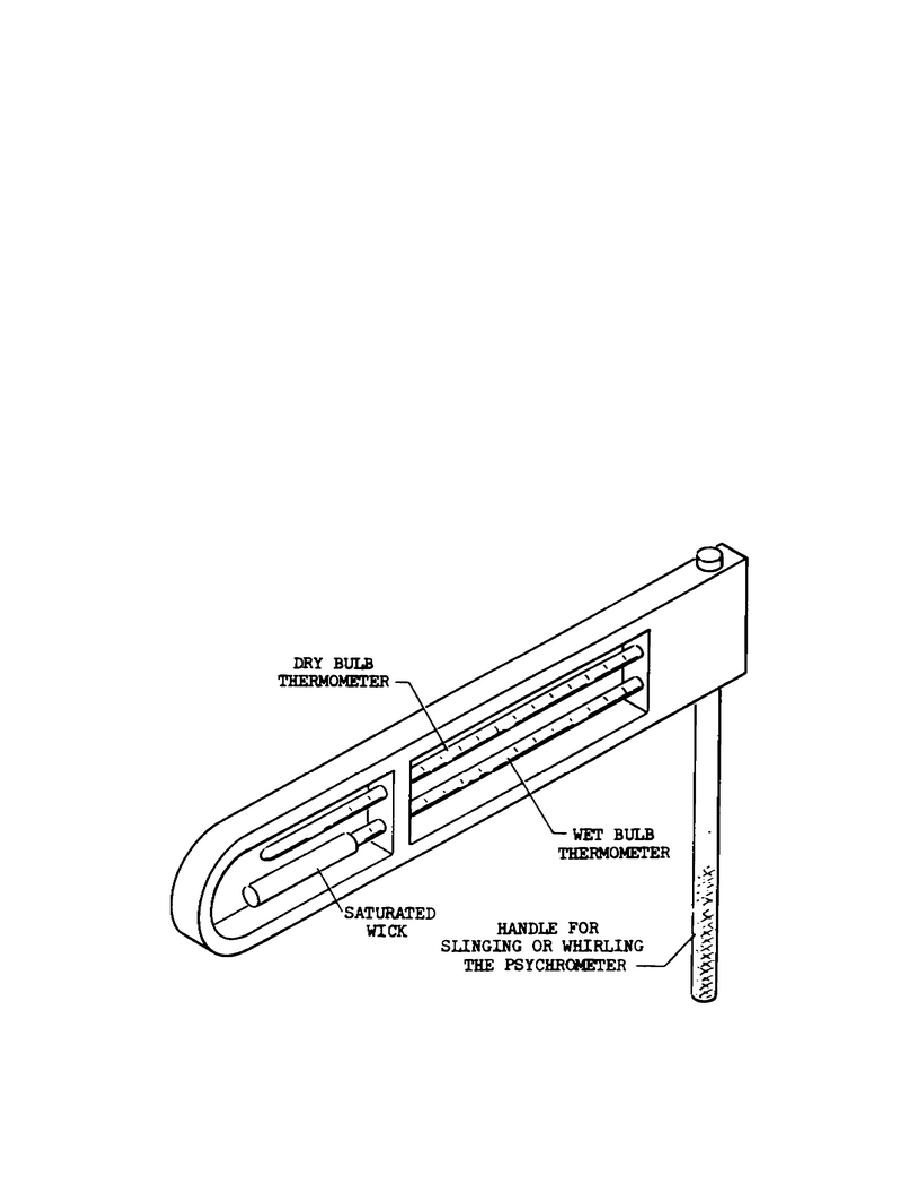
SM0486
(1) The psychrometer.
(a) The psychrometric method of determining humidity is of importance in
the field of meteorology, air conditioning, laboratories, etc.
Basically, the
psychrometer consists of two thermometers, one having a dry bulb, the other a wet
bulb. The dry-bulb thermometer indicates the actual temperature of the air. The
wet-bulb thermometer has a cloth wick surrounding its bulb. This wick is moistened
with water. When the air is dry, the rapid evaporation of the water from the wick
cools the bulb and lowers the temperature indicated by the wet-bulb thermometer.
The lower the relative humidity, the more rapidly the water evaporates to produce a
greater difference between the wet- and the dry-bulb thermometer readings.
(b) Figure 17 illustrates a typical wet- and dry-bulb psychrometer. The
function of the saturated wick is to retain a thin film of water on the wet bulb so
that evaporation may continue until the wet-bulb temperature reaches a minimum.
Cotton or soft mesh linen is normally used because of excellent water absorbing
properties. Sizing the wick, encrustations due to mineral content of the water and
the thermometer will interfere with a continuous film of water on the thermometer
bulb. Foreign substances in the water or on the wick change the saturation vapor
pressure of the water and affect the results. Therefore, wicks should be clean and
should be replaced frequently, and distilled water should be used for moistening
the wick.
The wick should extend beyond the bulb and on the stem of the
thermometer for an inch or so in order to reduce heat conduction along the stem to
the bulb.
Figure 17.
Wet and dry bulb psychrometer
31



 Previous Page
Previous Page
